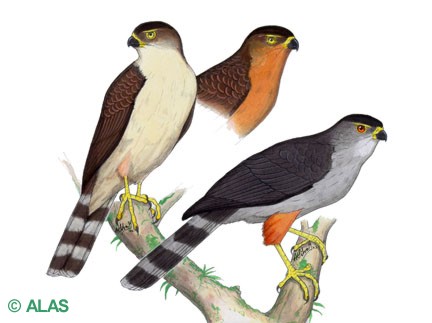A Landscape of Fear: How Amazonian Multi-Species Flocks React to a Predator
Flocks consisting of multiple species are found globally. They usually consist of multiple species, each with a different specializations and preferences for space and prey items so that they don’t compete with each other for resources. They also almost always have at least one “sentry” species, these are species that are well-adapted to spotting predators and alarming others when one is near. Despite decades of research, the processes surrounding these multi-species flocks and their interaction with the sentry species are yet to be fully understood, and so we conducted research that recorded the response these birds had when we introduced a predator. We brought a trained falcon and her trainer into the Peruvian Amazon, threw it at flocks of birds, and recorded their response. Each trial includes all of the alarm signals gathered from all mixed-flock species during the presentation of a Bicolor hawk (Accipiter bicolor) from a "medium distance" (45 degrees off axis, 10m) from the flock’s sentinel species. There are a total of 8 trials per flock type, with 2 flock types (high canopy flock and lower canopy flock), for a total of 16 treatments. The data for each flock type was combined to make the 2 networks below.
Goals
1. Create a robust network analysis that is tested against multiple null models generated using the bounds of the data we collected, which has been found to be a better comparison than randomly generated null models.
2. Create a model using decision tree, random forest, and bagging for the order of actions the flock shows in reaction to the stimuli. The goal is too be able to predict the actions of the birds when we run the model, as that would suggest a robust model to describe the order of action.

